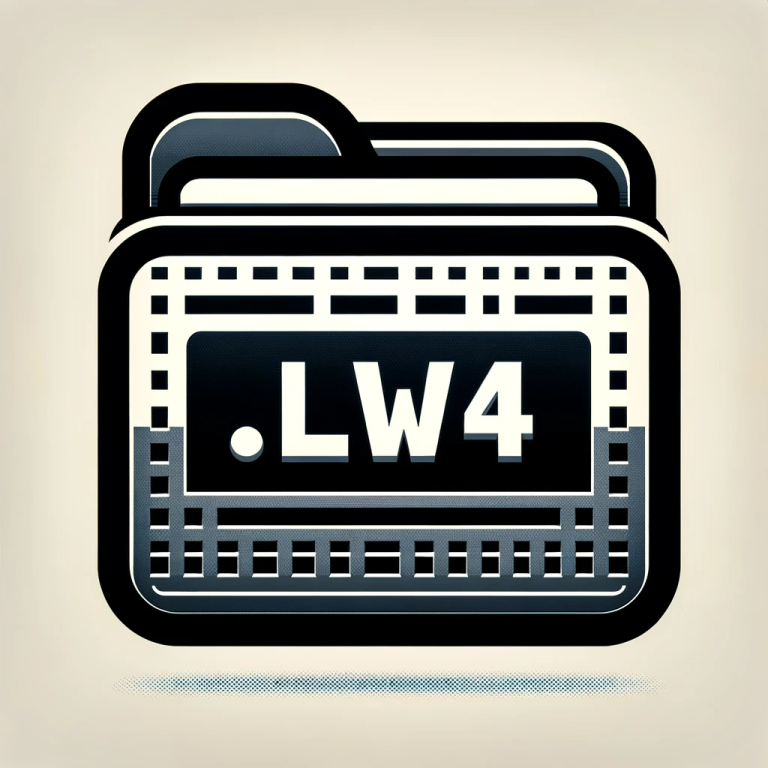.LW4 File Extension

Lightwright File
| Developer | John McKernon Software |
| Popularity | |
| Category | Data Files |
| Format | .LW4 |
| Cross Platform | Update Soon |
What is an LW4 file?
The .LW4 file extension is associated with Lightwright, a unique and highly specialized software used in the world of theater lighting design.
This file format is specifically tailored to manage lighting design data, such as cue lists, light inventories, and various other related information essential for stage lighting professionals.
More Information.
Originally, Lightwright was designed to address the unique challenges faced by lighting designers, such as tracking vast amounts of complex information about lighting fixtures, color filters, and cue requirements.
With advancements in technology and user feedback, Lightwright evolved, introducing the .LW4 extension in its fourth major release. This iteration was a significant upgrade, offering more sophisticated features and improved user experience.
Origin Of This File.
The .LW4 file extension originates from the Lightwright software, developed by John McKernon, a seasoned lighting designer and software developer.
Lightwright first emerged in the early 1980s, revolutionizing how lighting designers managed and organized their data.
File Structure Technical Specification.
The .LW4 file extension is structured to store detailed and extensive data. It typically includes information like fixture numbers, types, color gels, positions, and cue notes.
The file is organized in a way that facilitates easy navigation and modification of data, ensuring efficiency and accuracy in the fast-paced environment of theater production.
How to Convert the File?
Converting a .LW4 file, which is specific to the Lightwright software, involves a few steps. The goal is usually to transform the data into a more universally accessible format, such as CSV (Comma Separated Values) or PDF, which can be opened and used in a variety of different applications. Here’s a general guide on how to convert a .LW4 file:
- Open the Lightwright Software: First, you need to have access to Lightwright software. This is because the .LW4 file format is proprietary to Lightwright, and typically only this software can fully interpret and manipulate the data contained in these files.
- Load the .LW4 File: Open Lightwright and load the .LW4 file you wish to convert. This is usually done through the ‘File’ menu, where you can select ‘Open’ and browse to the location of your .LW4 file.
- Choose the Export Format: Once the file is open in Lightwright, you’ll need to choose how you want to export the data. Lightwright typically offers several export options, including common formats like CSV, which is excellent for spreadsheet applications, or PDF for a fixed-format view.
- Export the File: After selecting the desired export format, proceed with the export process. This might involve configuring a few settings, such as selecting which parts of the file you want to export (e.g., just the lighting cues, the entire inventory, etc.). Follow the prompts provided by the software to complete the export.
- Open the Exported File: Once exported, the new file (now in CSV, PDF, or another chosen format) can be opened with the appropriate software. For example, a CSV file can be opened with Microsoft Excel, Google Sheets, or another spreadsheet program, while a PDF file can be viewed in any standard PDF reader.
Advantages And Disadvantages.
Advantage:
- Organization: The .LW4 format allows for meticulous organization of complex lighting data, which is critical in large-scale productions.
- Compatibility: It is compatible with various lighting consoles and CAD (Computer-Aided Design) software, making it a versatile tool for lighting designers.
- Efficiency: Enhances the efficiency of the design process by allowing quick access and manipulation of lighting data.
Disadvantage:
- Software Dependency: The .LW4 file is primarily accessible through Lightwright software, which may limit its accessibility to those who do not use this specific program.
- Learning Curve: New users may find it challenging to navigate the complexities of the software.
How to Open LW4?
Open In Windows
- Install Lightwright: You need to have Lightwright software installed on your Windows machine. You can download it from the official Lightwright website or authorized distributors.
- Open the File: Once installed, launch Lightwright, go to the File menu, and choose ‘Open’ to browse and open your .LW4 file.
Open In Linux
- Use a Compatibility Layer or Virtual Machine: Lightwright is not natively supported on Linux. You can use a compatibility layer like Wine to run Windows applications or set up a Windows virtual machine.
- Accessing the File: If you’re using a virtual machine with Windows installed, you can then install Lightwright in that environment and open the .LW4 file as you would on a standard Windows system.
Open In MAC
- Install Lightwright: Lightwright is available for macOS. Download and install it from the official website.
- Open the File: Launch Lightwright on your Mac, and use the File menu to open your .LW4 file.
Open In Android
- Conversion Required: There’s no native support for .LW4 files on Android. You’ll need to convert the file to a more accessible format like PDF or CSV using Lightwright on a computer.
- Access the Converted File: Once converted, transfer the PDF or CSV file to your Android device and open it with a compatible app (like Adobe Reader for PDF or a spreadsheet app for CSV).
Open In IOS
- Conversion Required: Similar to Android, iOS doesn’t support .LW4 files directly. Convert the file to PDF or CSV using Lightwright on a computer.
- Open the Converted File: Transfer the converted file to your iOS device. Use an app like Apple Books for PDFs or Numbers for CSV files.
Open in Others
- Conversion is Key: Convert the .LW4 file to a universally accessible format (like PDF or CSV) using Lightwright on a computer.
- Use Compatible Software: Once converted, use software that can open the chosen format on your specific operating system.













